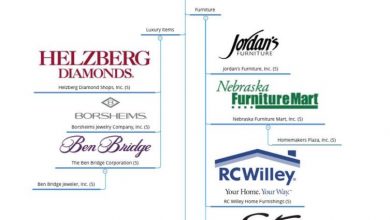From Sketch to Code: A Beginner’s Guide to Front-End Development

From Sketch to Code: A Beginner’s Guide to Front-End Development
Introduction
Are you interested in front-end development but not sure where to start? Look no further! In this beginner’s guide, we’ll take you through the process of turning a sketch into code, giving you a solid foundation to kickstart your front-end development journey.
What is Front-End Development?
Front-end development refers to the creation of the user interface and user experience of a website or application. It involves writing code using HTML, CSS, and JavaScript to structure, style, and add interactivity to a web page.
The Sketching Process
Before diving into coding, it’s essential to have a clear sketch of your design. This serves as a blueprint for your code and helps you visualize the final product. Use tools like Adobe XD or Sketch to create your design and consider factors like layout, typography, and color scheme.
Turning Sketch into Code
Now that you have your sketch ready, it’s time to start coding. Here are the steps to follow:
Step 1: Set up your Development Environment
To begin coding, you need a text editor and a web browser. Popular text editors include Sublime Text, Visual Studio Code, and Atom. As for browsers, Google Chrome and Mozilla Firefox are commonly used.
Step 2: Convert your Sketch to HTML
Start by creating an HTML file and copying your sketch’s structure into it. Use HTML tags to define headings, paragraphs, images, and other elements. Remember to use proper semantic tags for improved accessibility and SEO.
Step 3: Style your HTML with CSS
Next, create a CSS file and link it to your HTML. Use CSS selectors to target specific HTML elements and apply styles such as colors, fonts, margins, and padding. Consider using CSS frameworks like Bootstrap or Foundation to speed up development.
Step 4: Add Interactivity with JavaScript
If your design requires interactivity, JavaScript is your friend. Use it to create animations, handle user interactions, and dynamically update content. You can include your JavaScript code in a separate file or directly in the HTML document.
Frequently Asked Questions (FAQs)
Q1: Do I need to be an expert in design to create a sketch?
No, you don’t need to be an expert designer to create a sketch. A basic understanding of design principles and tools like Adobe XD or Sketch is sufficient. Practice and experimentation will improve your skills over time.
Q2: Which programming languages should I learn for front-end development?
The main languages you should focus on for front-end development are HTML, CSS, and JavaScript. HTML is used for structure, CSS for styling, and JavaScript for interactivity. Familiarity with these languages is crucial.
Q3: Are there any resources to help me improve as a front-end developer?
Yes, there are numerous resources available online to enhance your front-end development skills. Websites like Codecademy, MDN Web Docs, and freeCodeCamp offer free tutorials and courses. Additionally, joining coding communities and attending web development meetups can provide valuable insights.
Conclusion
Front-end development is an exciting field that allows you to bring your designs to life. By following this beginner’s guide, you now have the knowledge and steps required to turn your sketches into functional code. Embrace continuous learning and practice to become a proficient front-end developer. Happy coding!



